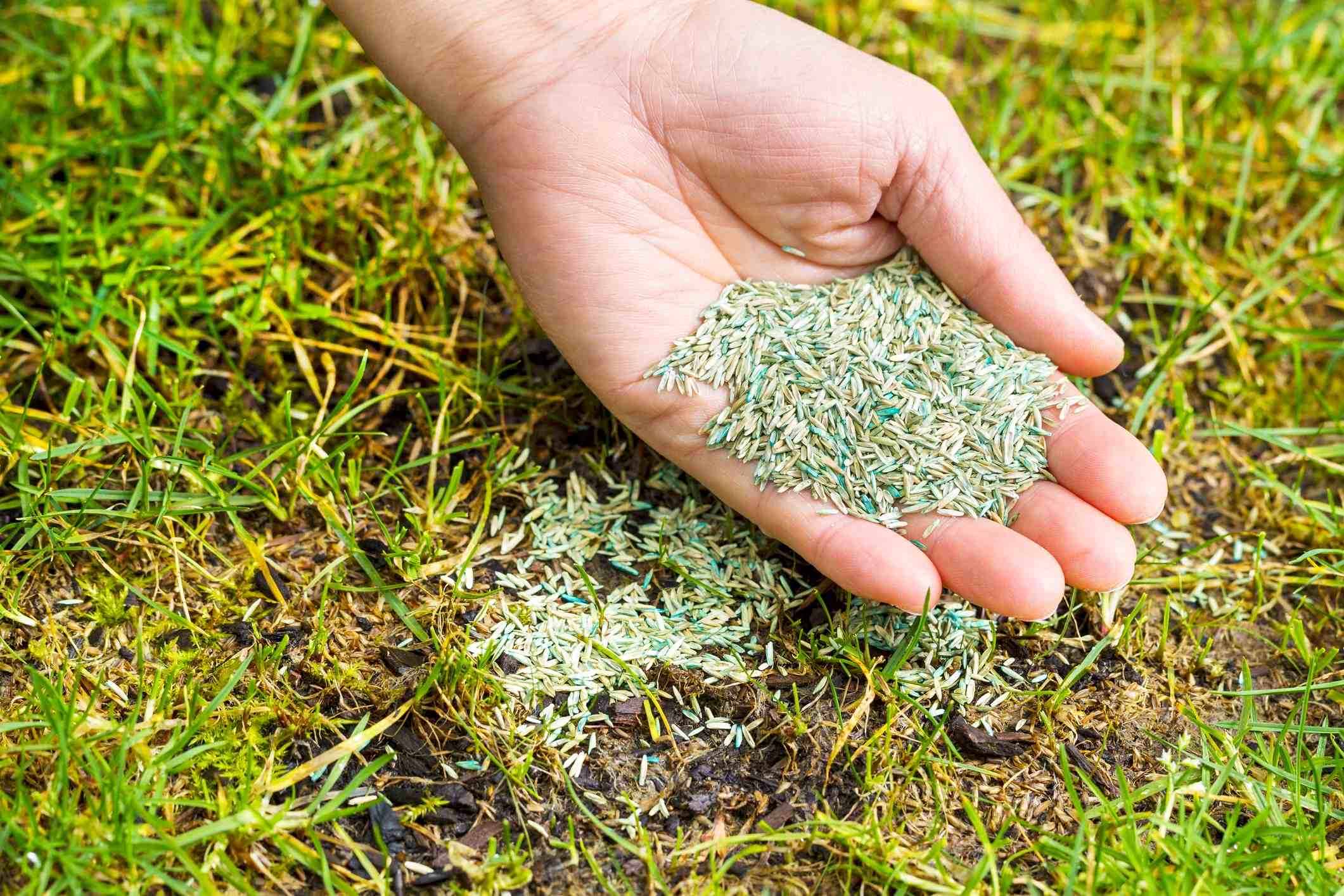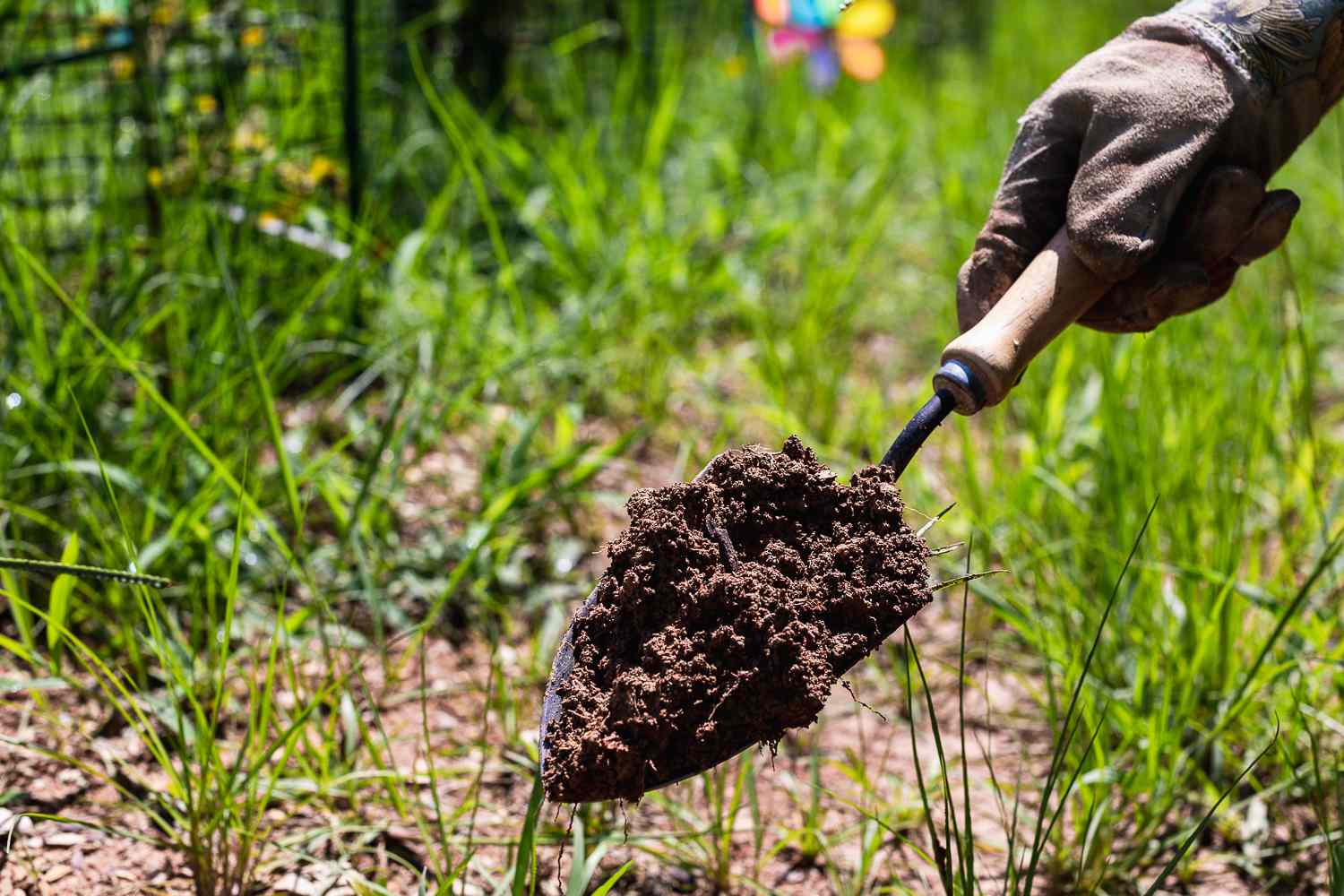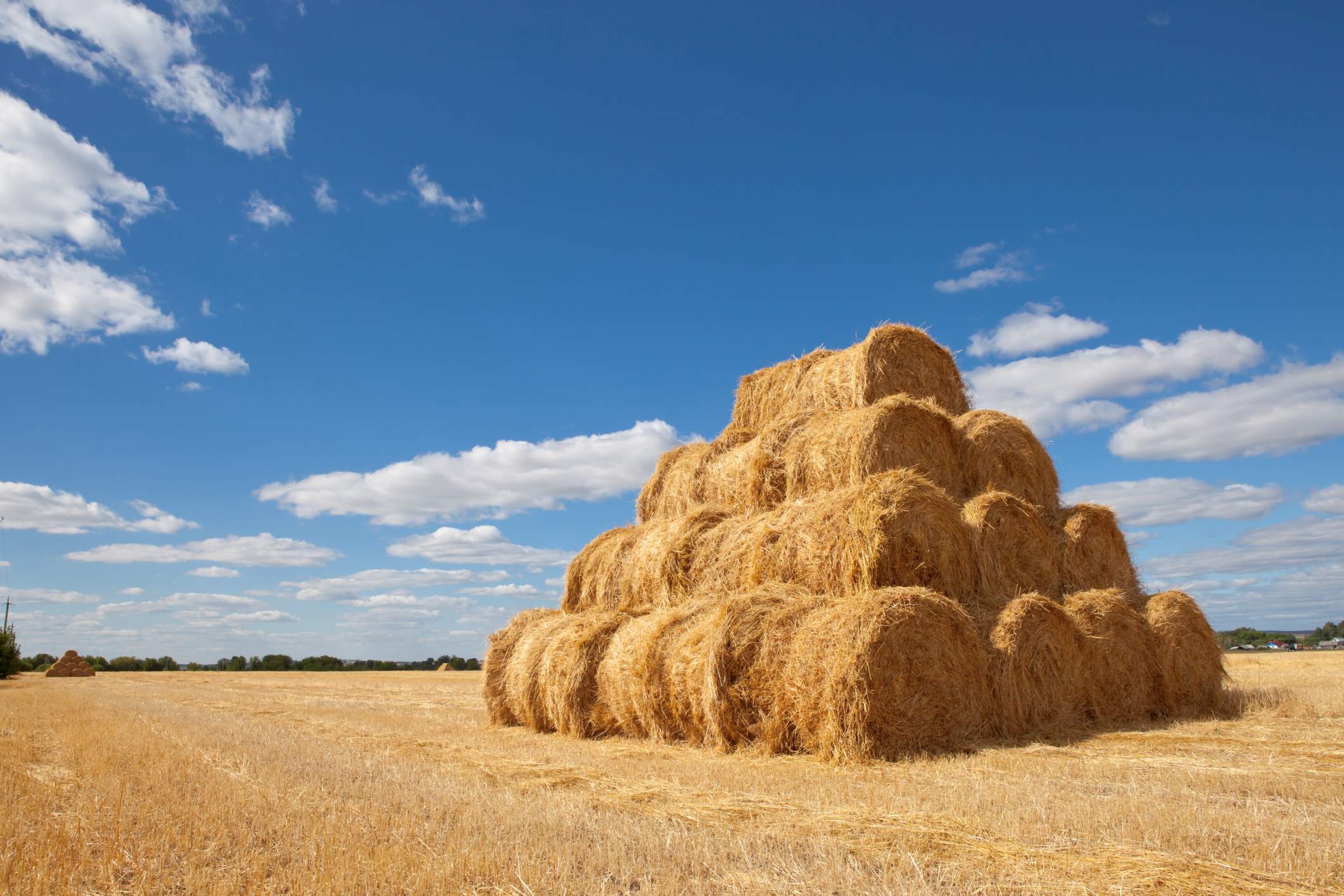Home>Gardening Techniques>Plant Care>How Long After Planting Grass Seed Can You Spray For Weeds


Plant Care
How Long After Planting Grass Seed Can You Spray For Weeds
Modified: January 22, 2024
Discover the optimal timing for weed control after planting grass seed. Learn effective plant care strategies to spray for weeds and promote healthy growth.
(Many of the links in this article redirect to a specific reviewed product. Your purchase of these products through affiliate links helps to generate commission for Chicagolandgardening.com, at no extra cost. Learn more)
Table of Contents
Introduction
Welcome to the world of plant care! Whether you are a seasoned gardener or just starting out, understanding how to effectively care for your plants is crucial for their health and vitality. One important aspect of plant care is managing weeds, which can compete with your plants for nutrients, water, and sunlight. In particular, if you have recently planted grass seed, it is essential to know when it is safe to begin spraying for weeds.
The timing of weed control treatments after planting grass seed is crucial for the success of your lawn. Applying weed control too soon can potentially harm or kill the newly germinated grass seedlings. On the other hand, waiting too long can allow weeds to establish and compete with your developing lawn. Finding the right balance is key.
Before we dive into the waiting period after planting grass seed, let’s consider a few factors that can impact weed control treatment. Firstly, the type of grass seed you have planted plays a role. Different grass species have different growth rates and levels of tolerance to herbicides. It is important to choose a weed control product that is safe to use with your specific grass seed type. Additionally, factors such as climate, soil condition, and overall lawn health can influence the timing of weed control.
So, without further ado, let’s explore the recommended waiting period after planting grass seed and the types of weed control products you should use.
Importance of Timing
The timing of weed control after planting grass seed is crucial for the success of your lawn. Applying weed control products too early can negatively impact the growth and establishment of the new grass seedlings, while delaying weed control can allow weeds to establish and compete with your developing lawn.
When you plant grass seed, it takes time for the seeds to germinate, develop roots, and establish a strong foundation. During this critical period, the newly sprouted grass seedlings are delicate and vulnerable. If you apply weed control products too soon, the chemicals can potentially harm or kill the young seedlings, compromising the overall health and density of your lawn.
On the other hand, waiting too long to address weed growth can lead to significant competition between the weeds and your grass seedlings. Weeds are known for their fast growth and aggressive nature, and they can quickly overshadow and outcompete your developing grass. This can result in a patchy and weak lawn.
Timing is also crucial in terms of weather conditions. Applying weed control products during periods of extreme heat or drought can stress both the grass seedlings and the weeds, making them more susceptible to damage. It is recommended to choose a time when the weather is moderate and the grass seedlings are actively growing.
By understanding the importance of timing when it comes to weed control after planting grass seed, you can ensure the best possible conditions for your lawn to thrive. Let’s now explore the factors you should consider before applying weed control products to your newly seeded lawn.
Factors to Consider Before Spraying for Weeds
Before you grab that bottle of weed killer and start spraying, there are a few important factors to take into consideration. These factors can help you determine the optimal timing and approach for weed control after planting grass seed.
- Type of Grass Seed: Different types of grass seed have varying levels of tolerance to herbicides. Before applying any weed control products, it is crucial to check if the product is safe to use with the specific grass seed you have planted. Certain grass species, such as fine fescue or bentgrass, may be more sensitive to herbicides compared to other species like tall fescue or Kentucky bluegrass.
- Growth Stage of Grass Seedlings: It is essential to wait until the grass seedlings have reached a certain growth stage before applying weed control products. Typically, it is recommended to wait until the grass has been mowed at least three times or until it has reached a height of 3 to 4 inches. This ensures that the grass seedlings are well-established and can withstand the application of herbicides.
- Soil Conditions: The condition of the soil plays a significant role in the effectiveness of weed control. Soil that is compacted, poorly drained, or lacking in nutrients can hinder the growth and development of your grass seedlings. It is crucial to address any soil issues before applying weed control. Aerating the soil, improving drainage, and providing proper fertilization can help create a healthy environment for your grass to thrive.
- Weed Density and Type: If you notice a significant infestation of weeds in your newly seeded lawn, it is important to address them sooner rather than later. The larger the population of weeds, the more detrimental their impact on your developing grass. It is also important to identify the types of weeds you are dealing with, as some may require specific herbicides or control strategies.
- Weather Conditions: The weather plays a crucial role in the effectiveness and safety of weed control. It is best to apply weed control products during a calm period, with no strong winds or rain in the forecast. Extreme temperatures, such as extreme heat or cold, can also affect the performance of herbicides. It is important to follow the instructions on the product label regarding the recommended temperature ranges for application.
By considering these factors before spraying for weeds, you can ensure that your weed control efforts are effective and do not harm your grass seedlings. Let’s now explore the recommended waiting period after planting grass seed.
Recommended Waiting Period After Planting Grass Seed
After planting grass seed, it is crucial to allow the seedlings sufficient time to establish a strong root system before applying any weed control products. The waiting period can vary depending on several factors, including the type of grass seed and the environmental conditions.
As a general rule of thumb, it is recommended to wait a minimum of 4 to 6 weeks after planting grass seed before applying any weed control treatments. During this time, the grass seedlings will have germinated, developed roots, and started establishing a healthy stand of grass.
Waiting for 4 to 6 weeks allows the grass seedlings to become more resilient and better able to tolerate the herbicides. By this point, the grass should have reached a height of 3 to 4 inches and undergone a few mowings. This indicates that the grass is actively growing and has a well-established root system.
However, it is important to note that waiting times can vary depending on the specific grass species and the climate conditions in your area. Some grass types may require a longer waiting period before they can safely tolerate weed control treatments. It is always best to consult the product label or seek advice from a local lawn care professional to determine the appropriate waiting period for your specific grass seed.
During the waiting period, it is crucial to monitor the development of both your grass seedlings and the weed population. If you notice significant weed infestation during this time, manual removal or spot treatments may be necessary to prevent the weeds from overtaking your developing lawn.
Remember, patience is key when it comes to establishing a healthy and weed-free lawn. Rushing the process and applying weed control products too early can have detrimental effects on the growth and overall success of your grass seedlings. By waiting for the recommended period and considering the specific needs of your grass species, you can ensure the best results for your newly planted lawn.
Types of Weed Control Products to Use
When it comes to controlling weeds in your lawn after planting grass seed, there are several types of weed control products to consider. The specific product you choose will depend on the types of weeds you are dealing with, as well as the safety recommendations for your particular grass seed variety.
Pre-emergent herbicides are commonly used to prevent the germination and establishment of weed seeds in your lawn. These herbicides form a barrier in the soil, inhibiting the growth of weed seedlings. It is important to note that pre-emergent herbicides need to be applied before the weed seeds begin to germinate. This means they should be applied prior to planting grass seed or shortly after, depending on the label instructions. Pre-emergent herbicides are particularly effective against annual grassy weeds like crabgrass and goosegrass.
Post-emergent herbicides, on the other hand, are used to control weeds that have already germinated and are actively growing in your lawn. There are selective and non-selective post-emergent herbicides available. Selective herbicides target specific types of weeds, while leaving the desirable grass seedlings unharmed. These are typically effective against broadleaf weeds like dandelions and clover. Non-selective herbicides, on the other hand, will kill any vegetation it comes into contact with, including your grass seedlings. These should be used with caution and only for spot treatments of stubborn or hard-to-control weeds.
When choosing a weed control product, it is important to carefully read and follow the instructions on the label. Pay attention to the recommended application rate, timing, and any additional safety precautions. Consider the specific needs of your grass seed variety, as certain herbicides may be more compatible with specific grass types. Additionally, if you’re unsure about which products to use or how to apply them, consulting with a lawn care professional can provide valuable guidance.
Remember, successful weed control is an ongoing process. While using herbicides can help manage weed populations, it is essential to maintain a healthy lawn through proper watering, mowing, fertilizing, and regular maintenance. This will create an environment that is less favorable for weeds to invade and compete with your grass seedlings.
By selecting the right weed control products and using them in accordance with the instructions, you can effectively manage weeds in your newly planted lawn while ensuring the health and growth of your grass seedlings.
Applying Weed Control After Grass Seed Establishment
Once your grass seed has fully established and reached the appropriate growth stage, it is important to follow proper guidelines when applying weed control products. This will help ensure their effectiveness and minimize any potential harm to your lawn.
Firstly, it is essential to closely monitor the development of both your grass seedlings and the weed population in your lawn. If you notice a significant infestation of weeds, it may be necessary to apply a targeted herbicide or use manual removal methods prior to applying a broad-spectrum weed control product.
When applying any weed control products, it is crucial to carefully read and follow the instructions on the product label. Pay attention to the recommended application timing, rate, and any specific precautions or restrictions.
Timing is critical when applying post-emergent herbicides. Optimal timing for weed control is typically during the active growth stage of the weeds, when they are most susceptible to the herbicide. This is usually when the weeds have reached the early growth stage or have developed several leaves.
Applying herbicides when the weather conditions are calm can help prevent drift and ensure that the product stays on target. Avoid applying weed control products during windy or rainy conditions as this can cause the herbicide to spread to non-target areas or wash away.
It is important to apply weed control products evenly and at the recommended rate. Using a calibrated sprayer or a granular spreader can help ensure that the product is distributed evenly across the lawn.
Keep in mind that herbicides may need to be reapplied periodically throughout the growing season to maintain effective weed control. Pay attention to any recommended reapplication intervals provided on the product label.
In addition to weed control, it is vital to continue providing proper care for your lawn, including regular watering, mowing, and fertilizing. A healthy, well-maintained lawn will be better equipped to naturally combat weed growth and minimize the need for excessive herbicide use.
Lastly, it is important to note that while weed control products can be effective in managing weeds, they should not be seen as a long-term solution. It is best to address the underlying factors contributing to weed growth, such as soil health, lawn maintenance practices, and proper irrigation. Taking a comprehensive approach to lawn care will ensure a more resilient and weed-free lawn in the long run.
By following these guidelines and using weed control products responsibly, you can effectively manage weeds while maintaining a healthy and thriving lawn.
Best Practices for Weed Control
To effectively control weeds in your lawn and promote a healthy, weed-free environment, it is important to follow some best practices. These practices will help you achieve long-term success in weed control and maintain the overall health of your lawn.
- Maintain Proper Lawn Care: A well-maintained lawn is less susceptible to weed growth. Follow proper lawn care practices such as regular watering, appropriate fertilization, and mowing at the correct height. This will help create optimal conditions for your grass to grow thick and dense, making it more difficult for weeds to establish.
- Seeding and Overseeding: Regularly overseeding your lawn can help fill in any sparse areas, reducing the opportunities for weeds to take hold. Choose high-quality grass seed that is suitable for your region and grass type to ensure successful establishment.
- Proper Watering: Water your lawn deeply and infrequently, encouraging deep root growth of your grass and making it more resilient. Avoid frequent, shallow watering, which can promote weed growth and weaken your grass.
- Mulching: Use mulch in garden beds and around trees to suppress weed growth. A layer of organic mulch, such as wood chips or straw, can help prevent weed seeds from reaching the soil surface and germinating.
- Regular Inspections: Regularly inspect your lawn for any signs of weed growth. Early detection can help you address the issue before it becomes a widespread problem.
- Hand Pulling: For small infestations or isolated weeds, hand pulling can be an effective method of control. Make sure to remove the entire weed, including the root, to prevent regrowth.
- Proper Herbicide Application: If herbicides are necessary, follow the instructions on the product label carefully. Apply herbicides when the weather conditions are calm, and avoid applying near sensitive plants or bodies of water. Take caution to prevent overspray or drift onto desired vegetation.
- Regular Maintenance: Keep up with regular lawn maintenance tasks such as mowing, edging, and removing debris. This helps create an environment that is less favorable for weed growth.
- Keep Soil Healthy: Make sure your soil is healthy and well-nourished by conducting soil tests periodically. Follow the recommendations for proper fertilization and amend the soil as needed to promote optimum grass growth.
- Stay Vigilant: Weed control is an ongoing process. Stay vigilant and address weed issues as soon as they arise to prevent them from spreading and taking over your lawn.
By following these best practices, you can effectively control weeds in your lawn and create a healthy, vibrant, and weed-free outdoor space.
Conclusion
Caring for your plants, especially after planting grass seed, requires a comprehensive approach that includes effective weed control. Timing is crucial when it comes to applying weed control products, as applying them too early can harm your grass seedlings, while waiting too long can allow weeds to establish and compete with your lawn. By considering factors such as grass seed type, growth stage, soil conditions, weed density, and weather conditions, you can determine the optimal timing for weed control.
Choosing the right weed control products is equally important. Pre-emergent herbicides can prevent weed seed germination, while post-emergent herbicides are used to control already established weeds. It’s essential to carefully read the product label, follow instructions, and select products that are safe for your specific grass seed type.
Applying weed control after grass seed establishment requires proper timing, even application, and adherence to safety guidelines. It’s also important to maintain good lawn care practices, such as regular watering, mowing, and fertilizing, to create optimal conditions for your grass to thrive and naturally suppress weed growth.
By following best practices, including regular inspections, hand pulling small infestations, and staying vigilant with regular maintenance, you can stay one step ahead of weeds and maintain a healthy, weed-free lawn. Remember that weed control is an ongoing process, and addressing underlying factors such as soil health and proper lawn care will contribute to long-term success.
So, embrace the beauty of a lush and vibrant lawn by implementing proper weed control practices at the right time. With a little care and attention, you can enjoy a weed-free landscape that showcases the full potential of your plants and provides an inviting outdoor space for relaxation and enjoyment.







